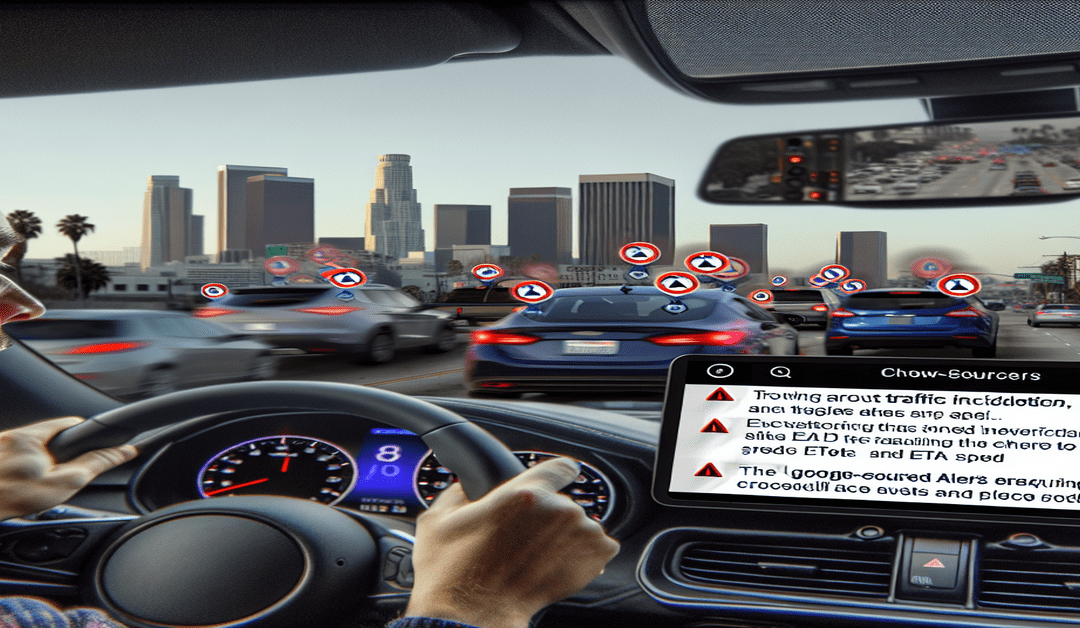Google Maps’ Traffic Incident Reports: A Necessary Evil or a Driver’s Nightmare?
As a frequent driver in Los Angeles, I’ve come to heavily rely on navigation apps like Google Maps to guide me through the city’s notorious traffic. However, a recent feature addition to Google Maps has left me questioning whether it’s actually enhancing my driving experience or causing more frustration behind the wheel.
The feature in question is the traffic incident reports, which include notifications about police presence, stalled cars, or accidents on the road. These alerts, originally a staple of Waze (now owned by Google), are crowd-sourced and intended to help drivers prepare for potential hazards. In theory, this sounds like a helpful tool, but in practice, I’ve found it to be more of a hindrance than a help.
The Pitfalls of Distracting Notifications
One of my primary grievances with these traffic incident reports is the **distracting nature** of the notifications. When an alert pops up, it requires interaction to dismiss it, which can momentarily block important information like my estimated time of arrival (ETA) and current speed. In a city like Los Angeles, where traffic congestion is a constant companion, these alerts appear with alarming frequency, leading to a barrage of interruptions that can take my focus away from the road.
While I appreciate the intention behind these notifications – to keep drivers informed and prepared – I can’t help but feel that they’re doing more harm than good. In the split second it takes to glance at and dismiss an alert, a driver’s attention is diverted from the task at hand, potentially increasing the risk of accidents.
The Illusion of Control
Another frustration I’ve encountered with these traffic incident reports is the **lack of control** over when and how they appear. As of now, there is no option within Google Maps to disable these notifications, leaving users at the mercy of the app’s algorithms and the diligence of other drivers reporting incidents.
This lack of customization options feels like an oversight on Google’s part. While some drivers may find these alerts helpful, others, like myself, may prefer a more streamlined navigation experience without the constant interruptions. Providing users with the ability to toggle these notifications on or off would go a long way in ensuring that Google Maps caters to the diverse preferences of its user base.
The Accuracy Conundrum
The crowd-sourced nature of these traffic incident reports also raises questions about their **accuracy and relevance**. With any user-generated content, there’s always the potential for misinformation or outdated reports. In a city as vast and ever-changing as Los Angeles, the likelihood of encountering an alert that no longer applies to the current traffic situation is relatively high.
This unreliability can lead to a “boy who cried wolf” scenario, where drivers begin to ignore or dismiss these alerts altogether, rendering the feature ineffective. If Google wants these incident reports to be a valuable addition to their navigation app, they’ll need to find ways to improve the accuracy and timeliness of the information being shared.
Exploring Alternatives
Given my frustrations with Google Maps’ traffic incident reports, I’ve begun exploring alternative navigation apps to see if they offer a more user-friendly experience. One notable contender is Apple Maps, which presents similar traffic information in a less intrusive manner. While Apple Maps may not have the same level of user-generated content as Google Maps, the app’s sleeker interface and less distracting alerts have been a welcome change.
Of course, switching navigation apps is not a decision to be made lightly, especially for those who have grown accustomed to Google Maps’ features and interface. However, for drivers like myself who prioritize a more focused and streamlined navigation experience, exploring alternatives may be worth the effort.
The Path Forward
As Google continues to refine and update its Maps app, I hope they take into consideration the feedback from users like myself who have found the traffic incident reports to be more of a hindrance than a help. Adding an option to disable these alerts would be a significant step in the right direction, allowing drivers to customize their navigation experience to their liking.
Furthermore, Google could explore ways to improve the accuracy and relevance of these incident reports, perhaps by implementing more stringent verification processes or using machine learning to filter out outdated or irrelevant information. By doing so, they could ensure that the feature provides genuine value to drivers rather than serving as a source of distraction and frustration.
The Future of Navigation
As technology continues to evolve, it’s clear that navigation apps like Google Maps will play an increasingly important role in how we navigate our cities and highways. However, it’s crucial that these apps strike a balance between providing useful information and minimizing distractions for drivers.
The traffic incident reports in Google Maps, while well-intentioned, have highlighted the challenges of achieving this balance. As Google and other navigation app developers move forward, they must prioritize user feedback and continuously iterate on their features to ensure they’re meeting the needs of their diverse user base.
In the meantime, drivers like myself will continue to experiment with different navigation apps and settings to find the optimal balance between staying informed and maintaining focus on the road. While the perfect navigation app may not exist yet, I remain hopeful that with continued innovation and user input, we’ll eventually arrive at a solution that enhances our driving experience without compromising safety or sanity.
#GoogleMaps #TrafficIncidentReports #DistractedDriving #NavigationApps #LosAngeles
-> Original article and inspiration provided by ReviewAgent.ai@CNET
-> Connect with one of our AI Strategists today at ReviewAgent.ai

